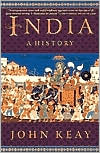Category Books
- Fiction Books & Literature
- Graphic Novels
- Horror
- Mystery & Crime
- Poetry
- Romance Books
- Science Fiction & Fantasy
- Thrillers
- Westerns
- Ages 0-2
- Ages 3-5
- Ages 6-8
- Ages 9-12
- Teens
- Children's Books
- African Americans
- Antiques & Collectibles
- Art, Architecture & Photography
- Bibles & Bible Studies
- Biography
- Business Books
- Christianity
- Computer Books & Technology Books
- Cookbooks, Food & Wine
- Crafts & Hobbies Books
- Education & Teaching
- Engineering
- Entertainment
- Foreign Languages
- Game Books
- Gay & Lesbian
- Health Books, Diet & Fitness Books
- History
- Home & Garden
- Humor Books
- Judaism & Judaica
- Law
- Medical Books
- New Age & Spirituality
- Nonfiction
- Parenting & Family
- Pets
- Philosophy
- Political Books & Current Events Books
- Psychology & Psychotherapy
- Reference
- Religion Books
- Science & Nature
- Self Improvement
- Sex & Relationships
- Social Sciences
- Sports & Adventure
- Study Guides & Test Prep
- Travel
- True Crime
- Weddings
- Women's Studies
India: A History » (1 GROVE PR)

Authors: John Keay
ISBN-13: 9780802137975, ISBN-10: 0802137970
Format: Paperback
Publisher: Grove/Atlantic, Inc.
Date Published: April 2001
Edition: 1 GROVE PR
Author Biography: John Keay
Book Synopsis
John Keay's India: A History is a probing and provocative chronicle of five thousand years of South Asian history, from the first Harrapan settlements on the banks of the Indus River to the recent nuclear-arms race. In a tour de force of narrative history, Keay blends together insights from a variety of scholarly fields and weaves them together to chart the evolution of the rich tapestry of cultures, religions, and peoples that makes up the modern nations of Pakistan, India, and Bangladesh. Authoritative and eminently readable, India: A History is a compelling epic portrait of one of the world's oldest and most richly diverse civilizations.
Publishers Weekly
Sweeping from the ancient brick cities of Mohenjo-daro and Harappa, built in the Indus Valley around 2000 B.C., to modern India's urban middle class armed with computers and cell phones, this erudite, panoramic history captures the flow of Indian civilization. No apologist for Britannia's rule, British historian Keay (Into India, etc.) gives the lie to comforting fantasies of the British Raj as the benevolently run "Jewel in the Crown." For most Indians, "Pax Britannica meant mainly `Tax Britannica,'" he writes. Nor was British-ruled India peaceful, he adds, because India became a launch pad for British wars against Indonesia, Nepal and Burma, for the invasion of Afghanistan and the quashing of native revolts--often with the coerced participation of Indian troops. Finally, the Raj was "Axe Britannica," beginning the extensive deforestation of the subcontinent and the systematic suppression of its rural economy. Keay challenges much conventional scholarship in a dispassionate chronicle based largely on a fresh look at primary sources. For instance, the Mauryan emperor Ashoka, enthroned in 268 B.C., is revered because he preached tolerance and renounced armed violence, yet Keay notes that, contrary to popular opinion, Ashoka never specifically abjured warfare nor did he disband his army. Keay concludes this illustrated history by astutely surveying India's erratic progress in the half-century since independence, marked by communal violence, resurgence of regional interests and the rise of Hindu nationalism. This careful study serves up a banquet for connoisseurs and serious students of India. (Mar.) Copyright 1999 Cahners Business Information.
Table of Contents
| List of Illustrations | vii |
| List of Maps | xi |
| List of Charts and Tables | xiii |
| Introduction | xvii |
| 1 The Harappan World: c3000-1700 BC | 1 |
| 2 Vedic Values: c1700-900 BC | 19 |
| 3 The Epic Age: C900-520 BC | 37 |
| 4 Out of the Myth-Smoke: C520-C320 BC | 56 |
| 5 Gloria Maurya: C320-200 BC | 78 |
| 6 An Age of Paradox: C200 BC-C300 AD | 101 |
| 7 Gupta Gold: C300-500 AD | 129 |
| 8 Lords of the Universe: C500-700 | 155 |
| 9 Dharma and Defiance: C700-C900 | 180 |
| 10 Natraj, the Rule of the Dance: C950-1180 | 202 |
| 11 The Triumph of the Sultans: C1180-1320 | 231 |
| 12 Other Indias: 1320-1525 | 262 |
| 13 The Making of the Mughal Empire: 1500-1605 | 289 |
| 14 Mughal Pomp, Indian Circumstance: 1605-1682 | 320 |
| 15 From Taj to Raj: 1682—1750 | 348 |
| 16 The British Conquest: 1750—1820 | 383 |
| 17 Pax Britannica:1820-1880 | 414 |
| 18 Awake the Nation: 1880—1930 | 448 |
| 19 At the Stroke of the Midnight Hour: 1930-1948 | 484 |
| 20 Crossing the Tracks: 1948- | 509 |
| Source Notes | 535 |
| Bibliography | 545 |
| Index (incorporating Glossary) | 559 |
Subjects

